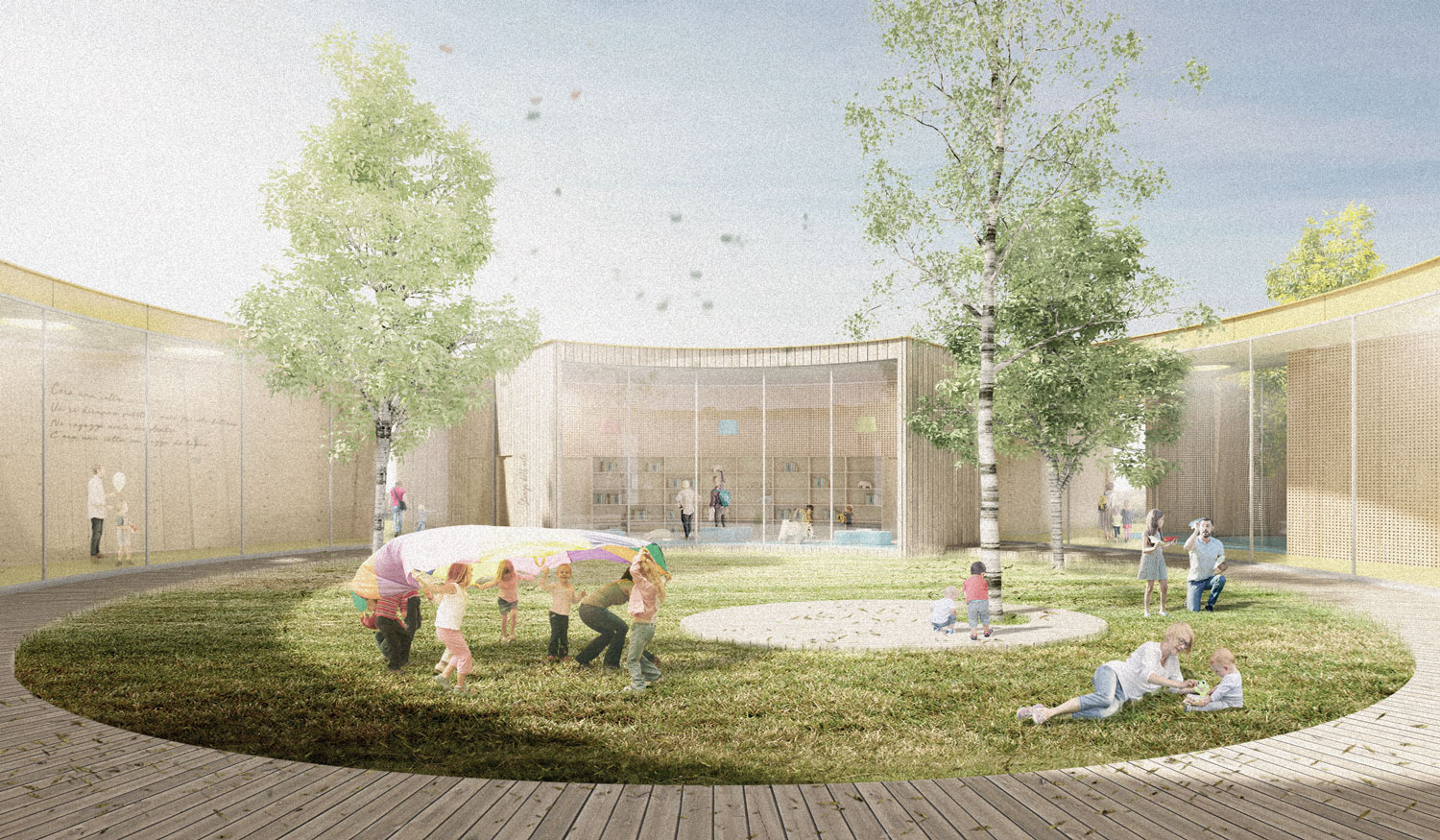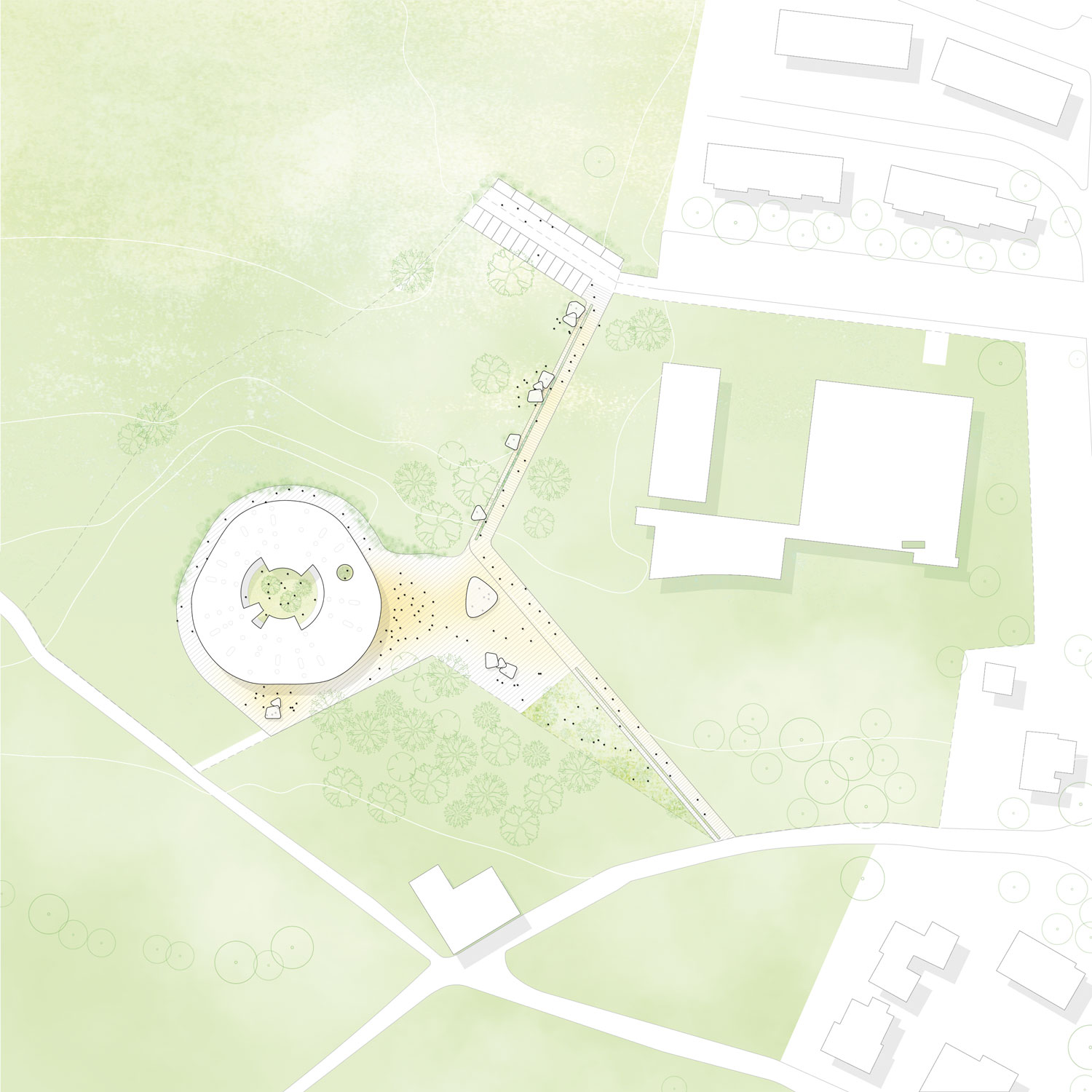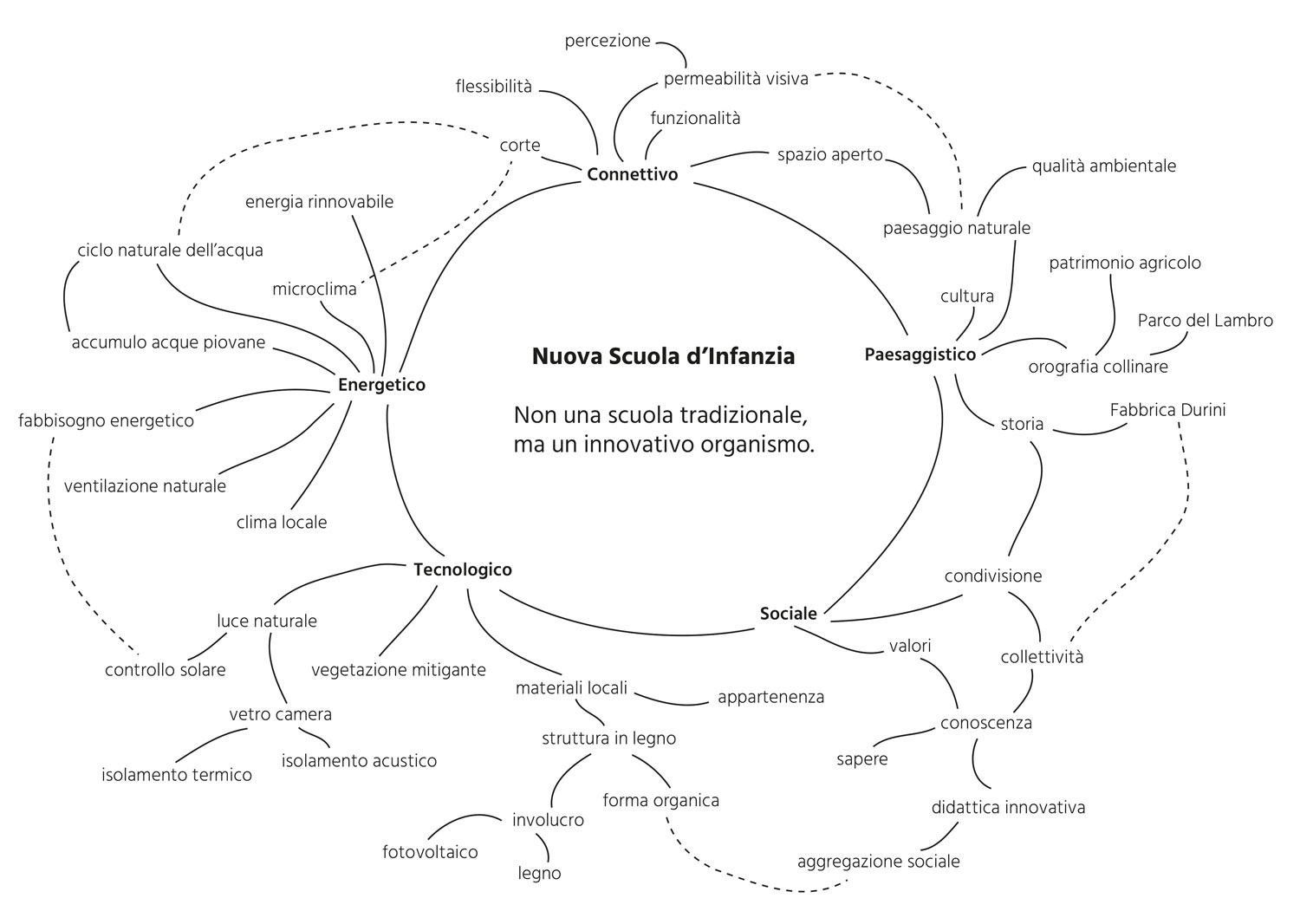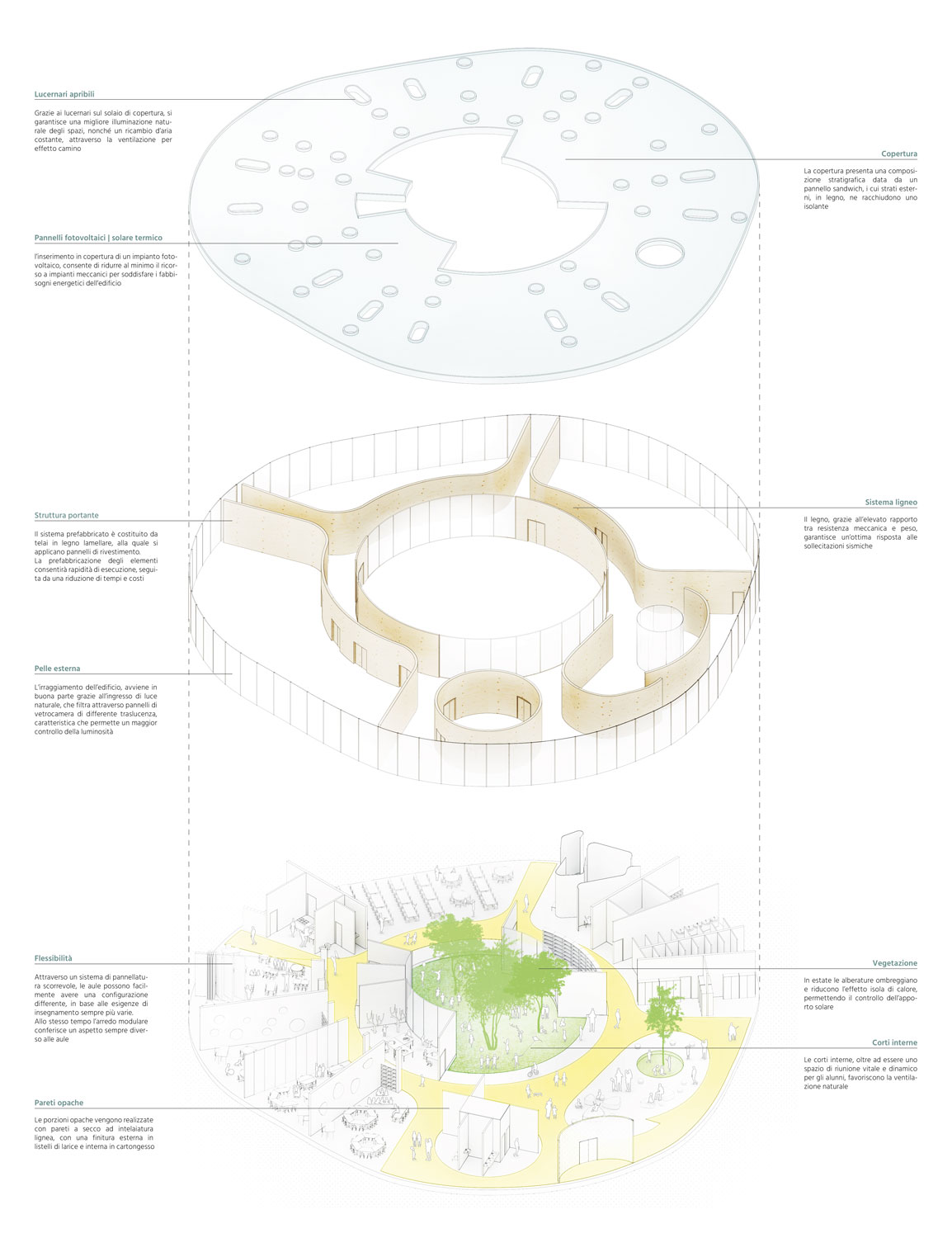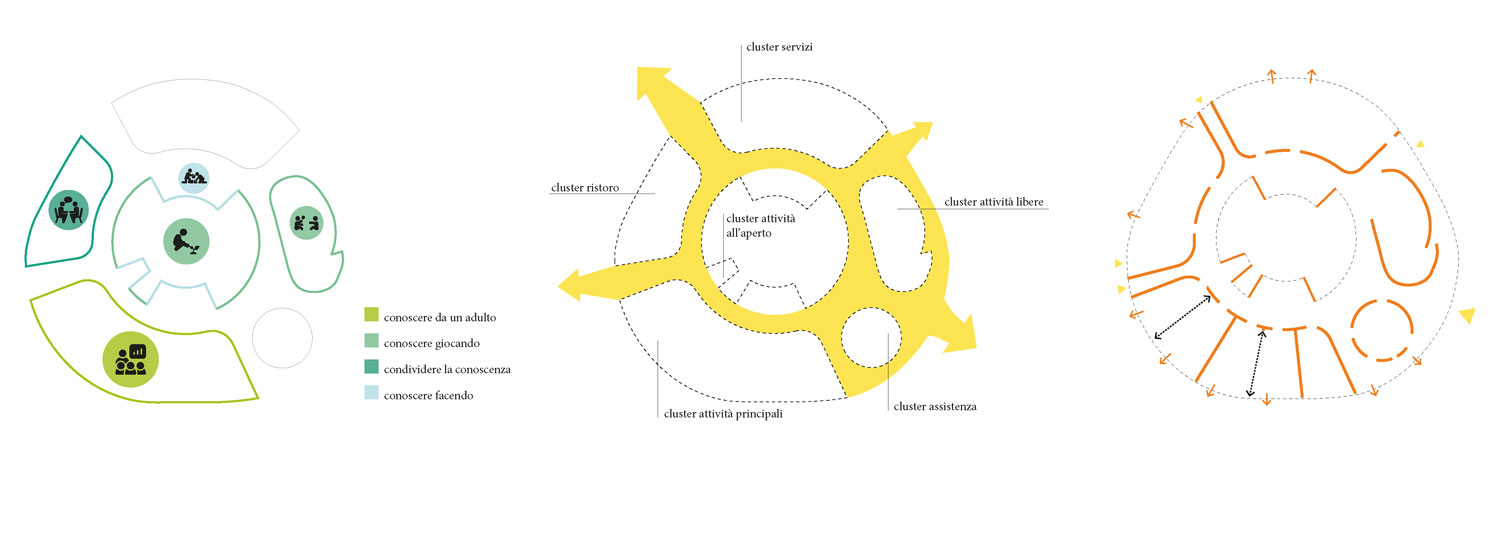2397-XSB-IT-2018
Client: Comune di Lurago d'Erba
Status: Competition (2018)
Location: Lurago d'Erba, Italy
Coordinates: 45.75097, 9.21817
Climate: Temperate, Humid subtropical
Materials: Glass, Wood
Environment: Urban
Visualizer: Studio
Budget: 2.460.650 €
Scale: 1.000 ㎡ Medium
Ratio: 2.460,65 €/㎡
Types: Education, Nursery
The project was born with the intent to respond with an architectural work to accurate programmatic needs; a school internally persuaded by the surrounding territory, from which it wants to resume, in mimesis, the traces and the soft hilly profiles, inheriting the imprint of nature, expressed by the seasonal ciclicity. The school, therefore, becomes a wooden ring consisting of a porous inner circle, with concentric layers in which the children are defended, dedicated to grow together, accompanied by the beating of nature.
The allegory at the base of everything becomes the opportunity to complete the design criteria that regulate both the education and the architectural structure in parallel. Built around a central garden, fertile land where children start to grow together, the building develops, light on a single floor, in contact with the earth. A specific activity is attributed to each ring. This allows for a clear organization of functions, leaving the external areas the task of bringing students together during moments of play and free activities.
The external arrangement is organized and designed taking into account several factors: the rearrangement of the parking area at the head of the project area, which is the beginning of an avenue equipped in close relation to the existing primary school, accompanying users and visitors to the new public square, a place of exchange between city and school. The pedestrian path, bordered by low vegetation, is the new access to the school and crossing that divides and organizes the area; this encourages families to stop after school, and are suitable for community use beyond school hours.
In addition, the choice of materials and vegetation have been designed to ensure durable and easy spaces in use and management. In general, the selected vegetative species are low maintenance; the ‘garden of the senses’ is thus articulated as a sensorial path outside the building, which embraces the structure without suffocating it, determining protected spaces for the activities of children, educators and parents.
The project is designed to stimulate the child’s interaction with the surrounding space according to a pedagogical vision in which nothing is left to chance, from the distribution of educational areas to the choice of construction materials, to the integration between indoor and outdoor environment. The connective space is a matrix that holds together the functional clusters of the school: the classrooms, flooded with light, designed to be flexible and at the service of an innovative educational system, have sliding walls and modular furniture, dilate or compress the space according to of needs.
The table, in its transparency, is a place of sharing during the hours of refreshment; still the space dedicated to services, with changing rooms characterized by sinuous dividers, which stimulate the child from the early hours. The central heart of the school and the patio are large outdoor spaces, where you can play the morning intermission during the summer, play outside and welcome small educational events, thanks to the addition of special activities, the atelier in close contact with the nature.
The agora, an informal meeting place, contains a play area, in a large but protected space, characterized by a tree-lined patio.
The structure provides for the use of natural materials with low environmental impact. The load-bearing structure will consist of wooden frames: a safe and ideal material to maintain the thermal insulation of the building. The high insulation, the optimal distribution of transparent surfaces, the use of advanced systems for the recovery of rainwater and the insertion in coverage of a photovoltaic system, will reduce the use of mechanical systems to the minimum to satisfy the energy needs of the building.
The properly architectural elements of the new kindergarten, such as the shape of the interiors, their organization, the choice of materials, the set of sensorial perceptions linked to light, colors, sounds, tactile suggestions, are conceived keeping account of the pedagogical and educational aspects related to the child’s growth. For this reason it is based on the simplicity of a wooden structure with large windows that allow the interaction between the closed areas of the classrooms and the outside, maintaining visual permeability towards the landscape. The sinuous and organic nature of the space and the warmth of the materials refer to a safe lair in which to take the first steps towards growth.


